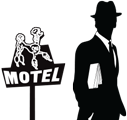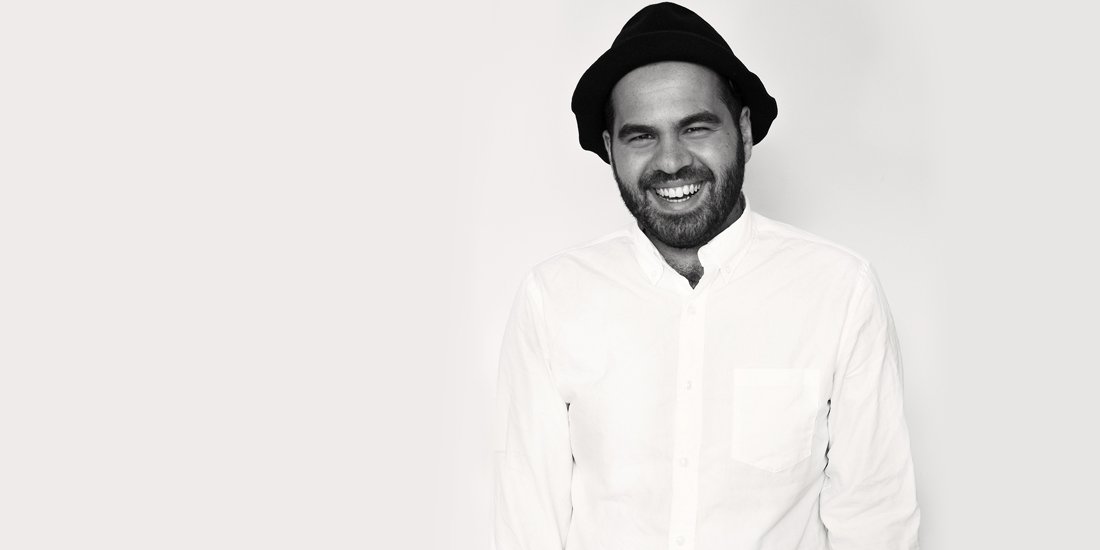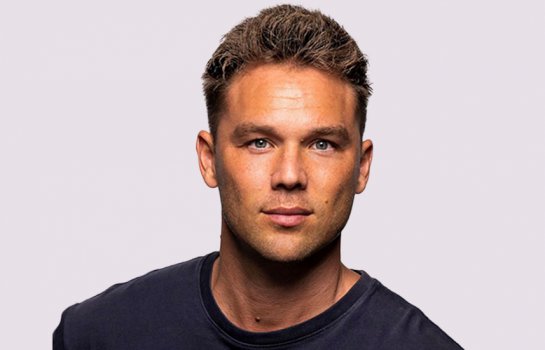Giuseppe Santamaria, street-style photographer
I think it's a discussion that started online and it's now gravitating towards 'mates' talking about fashion together, which is exciting ...
Giuseppe Santamaria shines from behind the lens. The Toronto-born former graphic designer turned street-style photographer, blogger and author is the brains behind world-renowned style blog Men in This Town, which captures men with a distinctive style and look in their natural habitat (aka on the street). The blog, which first began in Sydney in 2010, now holds a prominent stance across social media platforms and has been turned into a series of books and printed periodicals sold across the world. Armed with his camera, Giuseppe has recently released his third published book, Alone In A Crowd, which is already turning heads. Giuseppe is headed our way next week as part of the Coming into Fashion: A Century of Photography at Condé Nast exhibition at The Arts Centre Gold Coast , so we caught up with the renowned sartorial snapper to chat men’s fashion, taking risks and capturing the moment.
You’re on the Gold Coast for Coming into Fashion: A Century of Photography at Condé Nast, where you’ll take some time to chat as part of Talk Suite. Tell us, what can the Gold Coast folk expect to hear about on the day?
We’ll be talking about (from my point of view) how men’s style has evolved over the last few years. I started my street-style blog Men in This Town almost eight years ago, and the idea of it was to document men’s style in Sydney and how that was starting to evolve and change. I think because of social media and the internet, guys were getting more inspired and seeing global styles a lot more than before. It was really starting to boom in 2010 and even since then you really see the change, especially in Australian men. I think the sartorial look is really attached to how British men used to dress, but it never fully heeded the Australian climate. I think that has changed now with designers like Patrick Johnson who are creating more European and almost Italian looks that are more suited to the Australian climate. We’re seeing something a little more fresh in Australia that we haven’t seen before – so it’s going to be interesting to discuss this and see the future and direction it’s going.
We’re safe to say that the ‘everyday man’ is more conscious of fashion and confident in their style than they were say a decade ago. What do you think has been the biggest catalyst for this change?
Men are very visual, when they see things they react to it, and I think they become more comfortable in sharing and discussing it. I think the way men discuss fashion is the same way they would discuss any other hobby like sports or cars. They are very much about the details and specifics and what it means to them. I think it’s a discussion that started online and it’s now gravitating towards ‘mates’ talking about fashion together … which is exciting.
You’ve worked extensively throughout Tokyo, New York, London, Paris and your native Toronto (to name a few). From what you’ve seen on the streets, how does Australian men’s style compare to the big cities?
I think the major difference is population. You don’t necessarily have as many interesting looks on every corner here. I just came back from Tokyo, and ever corner you turn, there is an amazingly dressed person that has extreme style. There are different looks, no two people are the same. Whereas in Australia, you do see them but there are fewer and you don’t see them as often. There used to be distinctive style per city but I think that has changed again, because we’ve just become so global that fashion inspiration now just runs across the world.
What’s your best piece of fashion advice for men?
That’s just it – I wouldn’t really give advice as such, but if there’s one thing, it’s to have fun. There are no rules to fashion and that’s how I go about it.
Your latest project and third book is Alone In A Crowd. Have you noticed that your approach to your work has changed and/or developed since your first project Men in this Town?
I think the main thing that I kind of evolved with was that I’m not necessarily looking for extreme style, I am looking for people that have confidence in what they wear. If there’s someone walking down the street and they have an interesting look and walk with confidence without caring what other people think – that’s what I am trying to capture. I’m trying to capture that moment and how they hold themselves. The people that are like ‘this is me, this is how I dress, you can either like it or not like it’, are the ones I find so interesting, because you seldom see this. I think it’s an amazing moment to capture. And that’s what the latest book is – it’s from the last three or four years of me travelling the world and both going to fashion weeks and also just being on the streets during an average day. When I compare, I see there is a blend between the two worlds starting to happen.
We’re intrigued – how do you go about photographing regular people in the street?
Well, the traditional way of doing street-style photography is stopping someone and asking for their photo. I started that when I first started the blog, I didn’t necessarily feel comfortable. I wanted to capture the moment, because as soon as you ask someone to take their photo they all of a sudden hold themselves in a different manner. I’m trying to capture them in their own element when they think no one is looking. So long as it’s in a public place, it’s completely legal and fine, and I think the people that I choose to photograph have the confidence and don’t care what’s around them. Most of the time they acknowledge that they are being photographed and they see them camera and go on their merry way. It’s not just any person – I suss out the situation, I make sure it’s someone I want to photograph, and generally it’s someone who would similarly be comfortable with it. It’s a judgement of character in the end. Only once or twice have I been shooed away!
What’s your weapon of choice?
I’ve been working on an Olympus OM-D E-M1 Mark II. I’ve been working with a larger DSLR for the last three years or so, but they become very heavy for street photography. You can’t have anything too large, you need something a little more discreet and fast. I literally have it on me all the time. It’s either around my neck or on my hand. It’s a staple, it’s always there.
How would you best describe your own personal style?
From travelling my inspirations have always come from Japan and even Italy (where my family is from), so I think it’s a blend of the two where it’s beautiful fabrics like linen that are breathable and really suit the climate. There’s a little bit of that kind of flowly style that the Japanese tend to do so beautifully. It’s relaxed, easy and cool. Comfort for me comes first, because I am walking on the streets and doing my thing. Maybe I’ll add one little accessory that brings out my personality a little more.
When was the first time you picked up a camera?
My background is graphic design and I’ve worked in magazines for the past six or seven years. So, I’ve worked with a lot of photographers and that’s what kind of inspired me to pick up a camera and start shooting. I had to walk to work, it was about a 45-minute walk through the city, and I just decided to have my camera on me and take photos as I went. Street photogrpahy was something I just gravitated towards. I loved how photographers from the 50s and 60s captured different cities and the romance you saw in it years later. It could have looked like an average snap shot at the time – you don’t notice the romance when you’re in it, but you see it afterwards. Hopefully in 20 years time, people see something interesting in my photos!
Who or what has been your biggest influence?
Photographers like Saul Leiter and Ernst Haas are ones that I admire. Phil Cunningham (late New York Times fashion photographer) is an obvious inspiration – he did a column where he photographed people of New York over decades – I find that so inspiring that he could just kind of go along with his life and have something so consistent like that. If I could carry on this blog for the rest of my years and have this archive online and in books that would be amazing. This is like my column – I hope to keep it for a while.
What’s your favourite place in the world to shoot street style?
Definitely Japan. Tokyo is my absolute favourite. I could spend a year there exploring. I have been a few times and I feel like I haven’t even touched it yet, there is so much to take in. The variety of style and the attention to detail that they put into their individual styles is quite amazing. I feel like clothing is their way of expressing themselves, you see a lot of people putting it out there. It’s a fun city.
Finally, what words of wisdom do you live by?
Take the chance and take a risk, no matter what. Whether that’s fashion or choices in life. I can sometimes be a little bit of an introvert but I make sure I push myself as much as I can, regardless of what it is. If you fail, you fail. If you succeed, then you succeed, it think that’s the point of all of it. It’s the same with style – guys can almost be too serious about it. Have fun, try different things, as long as it’s who you are and how you want to express yourself, that’s all that matters.
Coming into Fashion: A Century of Photography at Condé Nast will be unveiled at The Arts Centre Gold Coast on Friday November 24. The exhibition and associated events will run until February 2018.


